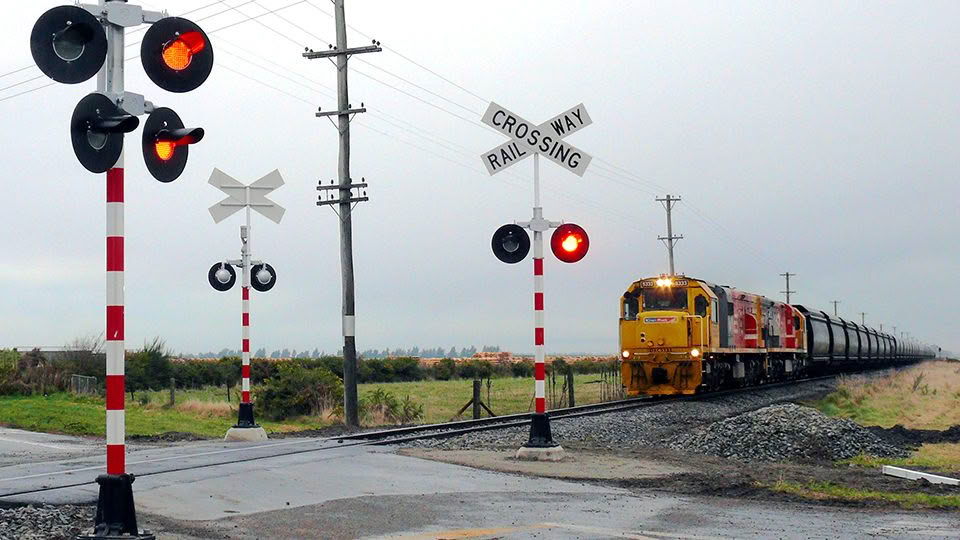Govt to invest $200m to remove level crossings in Aucklanders

The Government will invest funding to remove the level crossings in Takanini and Glen Innes and replace them with grade-separated crossings.
It will allocate up to $200 million for its share of funding to accelerate removal of the level crossings in Takanini and Glen Innes, which will include building three new grade-separated road bridges at Manuia Road, Taka Street, and Walters Road; constructing new station access bridges at Glen Innes, Te Mahia and Takanini Stations, and closing two unsafe crossings at Spartan Road and Manuroa Road.
The move will maximise the City Rail Link’s ability to speed up journey times by rail and road and boost Auckland’s productivity, Transport Minister Chris Bishop and Auckland Minister Simeon Brown said.
“The City Rail Link (CRL) project is on track to open next year. It will transform travel across much of Auckland with shorter travel times and reductions in traffic congestion among the significant benefits Aucklanders can look forward to,” they said.
“Aucklanders will experience the CRL’s full benefits of faster, easier journeys with the removal of level crossings, allowing more frequent trains to travel along these lines.
“Level crossings, where roads and train lines intersect, are universally loathed by drivers. Most of us know the sinking feeling of seeing the lights start flashing and the boom gates lowering to signal an approaching train and mentally calculating the delay you’ll have to manage – after all, for truckies, tradies, couriers and many others on the roads, time is money and delays cost.”
The ministers said these traffic delays mean level crossings require a direct trade-off between road-user efficiency and rail-user efficiency.
“One of CRL’s huge benefits for Aucklanders will be more frequent trains, giving people a viable alternative to car travel.”
Auckland Mayor Wayne Brown said the announcement was great news for Auckland, and unlock congestion across the city.
“Once open next year, CRL will double Auckland’s rail capacity and reduce congestion across the city, enabling Aucklanders to get to where they want to go faster.
“Auckland Council has indicated that it is willing to fund its share of the cost, so this announcement will provide Aucklanders with much-needed confidence that this programme of work will go ahead.
“I’ve always been focused on getting Auckland moving. I made sure council’s share of the funding was included in the Long-Term Plan, so it’s great to see the government get on board and match the funding,” said Brown.
National Road Carriers has welcomed the $200 investment, but has major concerns on Auckland Transport’s delays in getting them built.
“The level crossings are expected to close in 2026 with the opening of the City Rail Link, with more frequent timetables causing barrier arms to be down up to 50 minutes per hour. But businesses, light industry, and commuters in South Auckland will be left grappling with severe congestion and economic harm while waiting for these essential crossings to be built,” says James Smith, GM policy and regulatory, National Road Carriers.
“Takanini, a key hub for Auckland’s light industry, is already burdened with chronic traffic congestion. The planned level crossing closures, without timely level crossing replacements, will cause severe disruption to freight and transport operators,” he said.
“Many businesses are already considering relocating due to the uncertainty and inefficiencies caused by Auckland Transport’s (AT) failure to deliver integrated planning.
“The reality is stark: CRL construction has been underway for over a decade, yet property for these crossings has not even been purchased. Businesses and commuters are now staring down the barrel of six years of detours between level crossing closures and the eventual construction of grade separated crossings. Such a delay will deal a significant blow to Auckland’s economy, harming productivity and growth.
“Six years of economic harm is simply not acceptable. These vehicle crossings must be fast-tracked and built with urgency. AT has no excuse for this planning failure – integrated planning between road, rail, and freight networks is standard practice in transport infrastructure projects worldwide,” said Smith.
“The message is clear: action is needed now. Auckland cannot afford to wait until 2032 to see these vital transport links delivered.”





